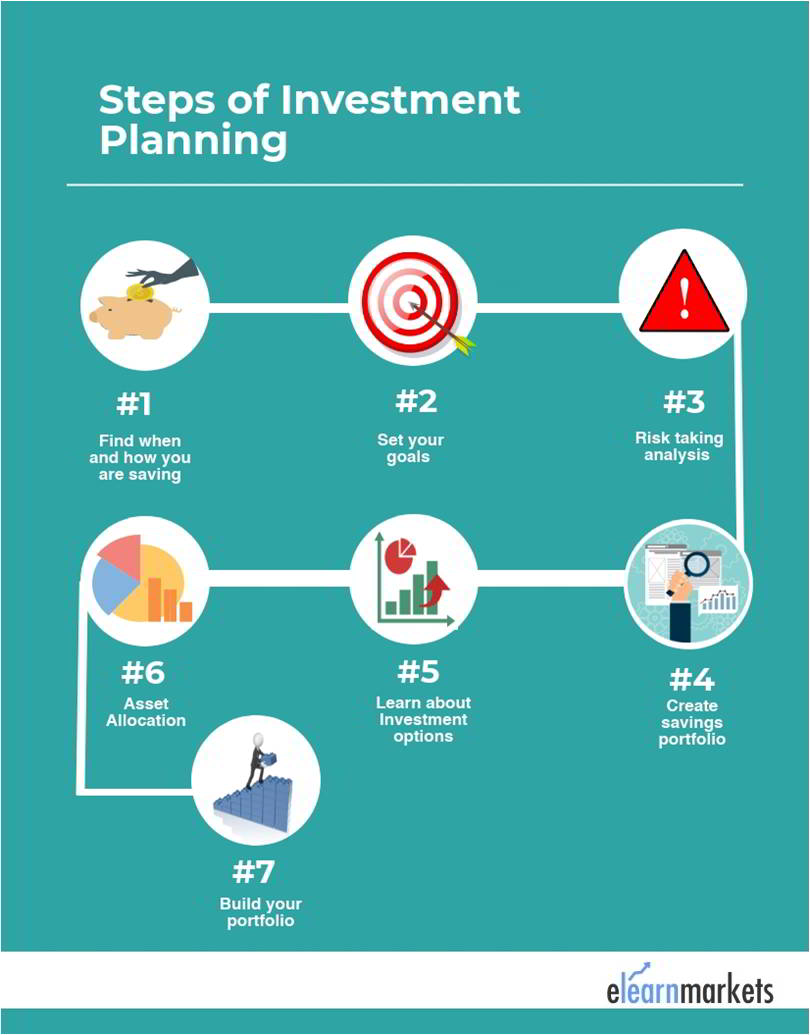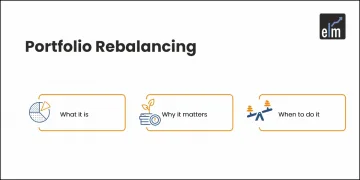Making a smart investment can actually make our financial life better. It will help in providing us enough funds to make our dreams fulfil. Investment planning is very important before investing. Nowadays most of the people have a portfolio which consists of various investment vehicles like stocks, gold, bonds, government schemes etc. So a proper investment plan is needed in order to secure our future financially.
What is investment planning?
Investment planning is the process of identifying financial goals and converting them through building a plan. Investment planning is the main component of financial planning. The investment planning begins with identification of goals and objectives. Then we need to match those goals with our available financial resources. Nowadays there are many investment vehicles to invest in, most common being cash, equities, bonds and property. So according to the funds available we can invest in these vehicles to obtain our goals and objectives.
Benefits of Investment Planning:
The importance and benefits of investment planning are stated below:
- Family Security: Investment planning is important from the point of view of family security. If anything happens to the working member in the family then the other members of the family will be financially secure by the investment.
- Efficiently manage income: It is quite possible to efficiently manage the income and expenditure of person with an investment plan. Managing income helps the person to manage other expenditures, tax payments etc.
- Financial Understanding: Investment planning helps in understanding about our current financial situation. It becomes easy for an individual to evaluate investment or retirement plan by having financial understanding.
- Savings: One should invest in those investment vehicles which are highly liquid. Funds can be easily taken out from those investments in the case of emergency.
- Standard of Living: The savings created by the investment is very useful in difficult times. For example, death of the working individual in the family affects the standard of living to a great extent. That time the investment made by the working person becomes useful source of income of the family.
Objectives of investment planning
- Safety: One of the main objectives of Investment planning is the safety of our family, in the terms of finance. One should also invest in safe investment vehicles. Investment is money market is safer than bond market.
- Income: In order to generate greater income, we need to invest in higher risk investment vehicles to get higher income from it. Investors must analyse properly, evaluate their risk-return ratio and accordingly invest in appropriate asset classes in order to enjoy the benefit of maximisation of returns. Therefore a proper investment planning is very important.
- Growth of Capital: Capital gain is different from the returns in the sense that they are only realized when the securities are sold at a higher price than the price in which it was originally purchased. Selling at a lower price leads to capital loss. Therefore investors who want capital gains should invest in securities for longer term.
- Tax Minimization: An investor may take up those investments in order to opt for tax minimization as a part of his investment strategy. For example a rich businessman may want to seek those investments with favourable tax income in order to reduce tax.
- Liquidity: Many investments are liquid which means they can be easily converted into cash. But achieving this level of liquidity requires sacrifice of certain level of income.
How to create a solid investment plan?
Before investing in any investment vehicle, a solid investment planning is required. If we do not plan then all our investments will turn into a mess. Planning is a very important step before investing.
The investment planning steps are as follows:-

1. Find when and how much you are saving
This is the first step of investment planning. As soon as we are employed we should start saving. Whatever our salary is we should not spend all of it and start saving for our retirement and unforeseen emergencies.
“Someone is sitting in the shade today because someone else planted a tree a long time ago.”- Warren Buffett
There can be many unforeseen emergencies in our life such as life threatening diseases for which saving are important. We should also determine how much to keep aside every month for our savings. Some of the investment products require a very little amount to save. So even if we have less money to save, we should not worry about it.
2. Set your financial goals
We need to identify our short term as well as long term goals. This is how we start goal setting in investment planning. Our goals can be saving for a vacation or buying some gadget which we really want to own. This can be termed as short term goal as saving required for this is less than twelve months.
Payment of home loan requires 3-4 years of sayings and it can be categorised as medium term goal. Long term goals include child education and marriage.
Identifying and setting our goals is an important step in investment planning. It should be well defined by adding some value to it. We should have the clarity about the goals which we wish to achieve. Different goals require different investment planning like:
- For retirement: Retirement planning is a long term goal. Retirement planning requires investing in health care insurance and other types of insurances.
- For child education: After becoming a parent, one should start planning for their child’s future as nowadays education have become very expensive. One should invest in comprehensive health and education plans.
- For child higher education: For this goal, one should start investing in a combination of mutual funds through SIP with equity and debt exposure.
- For child marriage: Since it is a long term goal one can take a little more risk in the terms of choosing mutual fund.
- For buying a house: Buying a house requires huge investment and one should be financial ready for making such huge investment.
- For creating emergency fund: One should always invest in liquid fund for creating a liquid fund. As it is an emergency fund, one can take out money when required in emergency.
3. Analyse your risk taking ability
We should know our risk taking appetite. If we have just start earning then our risk taking appetite is very less. We should invest in those investment vehicles which has less like fixed deposits.
People who have ample money to save, their risk taking appetite in more. They should invest in those investment products which have higher risk like investing in index stocks or mutual funds. The risk taking analyse is a very important step in investment planning. One should also go through all the risks associated with the investment vehicles before investing in them.
4. Create a savings portfolio
After determining goals and risk taking appetite, the next step in investment planning is to create a savings portfolio. One should have a diversified portfolio which should include many investment vehicles such as stocks, gold, bonds, fixed deposit, real estate etc.
The main purpose to have a diversify portfolio is to diversify the risk associated with investment vehicles. Some investment tools may be less liquated than other. Even if we require money for some emergency we will able to take out money from the liquidated investment vehicles.
5. Learn about all investment options
Before we start investing in we need to learn about all the investment options available in the financial market. We need to go through all the investment vehicles such stocks, bonds, gold, real estate, life insurance etch and compare the rate of returns and risks associated with it.
Nowadays there are many online website where we can learn about the all type of investment vehicles and also compare the rate of return and risk associated with it. It will help us in putting our money in the investment vehicle according our financial condition and risk taking appetite.
This will also help in not falling in the traps which are created by the middlemen who gain commission by selling investment products like life insurance. When we have enough knowledge about it we can select and buy our own. This is an important step of investment planning.
6. Calculate your asset allocation

After determining the risk return portfolio the investor can develop our asset allocation strategy in investment planning. The investor can select from the various asset classes available in the financial market and allocate assets in such a way that it achieves optimum diversification while targeting the expected returns.
The investor can assign percentage to various asset classes such as stocks, gold, real estate, bonds etc based on the range of the volatility of their portfolio. The asset allocation strategy depends on the investor’s current financial situation and goals.
7. Know how to build your portfolio
The most important step in investment planning is implementing the portfolio plan. After we implement our portfolio plan the management process begins. It is necessarily to monitor the investment performance regularly, mostly quarterly and review the portfolio plan annually. The investor’s goals and situations should be reviewed once a year to determine whether there are any significant changes.
The main purpose of reviewing the portfolio is to determine whether the investment is aligned with the investor’s goals. This may be considered as a last step in investment planning.
Learn Your Behavioural Biases or Emotions
“The individual investor should act consistently as an investor and not as a speculator.” – Ben Graham
While doing investment planning, one should control their emotions and focus on their goals, costs and how much and how often we save. We should try to ignore the little dips in the market and have a long term perspective. We should not get worried about negative returns as it will turned back to positive returns in long run. So we should have control on our emotions and stick with our investment plan.
Conclusion
As discussed above, a proper investment planning can help us in making smart investment. If we do not have time to do our own investment planning, we can take plan of financial planner. They will help us in making our investment portfolio according to our risk taking appetite and current financial condition.






